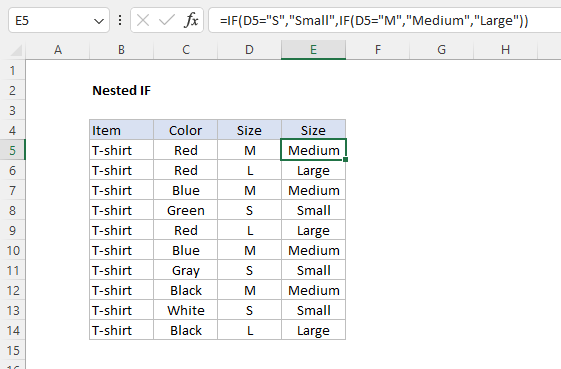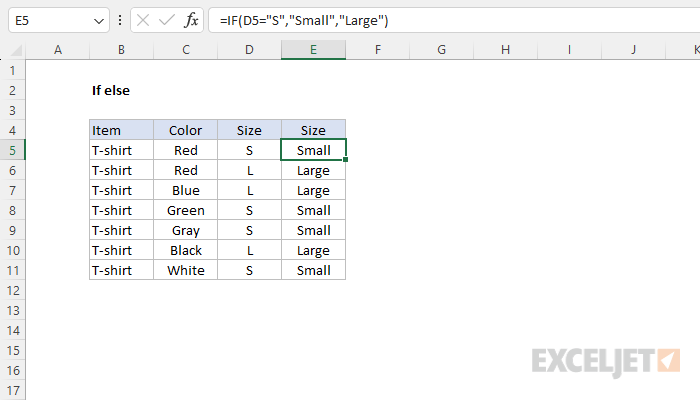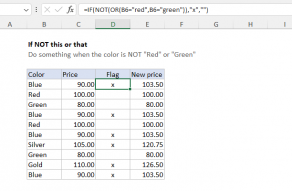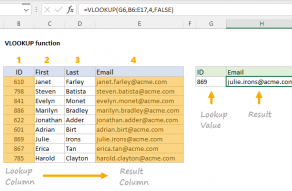Explanation
The goal is to return "Small" when the value in column D is "S" and "Large" when the value in column D is "L". In other words, if the value in column D is "S" return "Small" else return "Large".
If else in Excel
The concept of "If else" in Excel is handled with the IF function. The IF function runs a test, then returns one value if the result is TRUE, and a different value if the result is FALSE. The generic syntax for IF looks like this:
=IF(test,true_result,false_result)
For example, to check cell A1 and return "Yes" if the value is greater than 100 and "No" if not, you can use the IF function like this:
=IF(A1>100,"Yes","No")
Note that the "else" concept is built into the IF function. The first argument is the logical test, and the second argument is the result (or calculation) to return when the test is TRUE. The third argument is the "else" — the value or calculation to return if the result of the logical test is FALSE.
Example worksheet problem
In the worksheet shown, we have a list of T-shirts that includes color and size. The sizes in column D are abbreviated, with "S" for small and "L" for large. There are only these two sizes in the data. Let's say you want to write a formula to expand these abbreviations and show either the word "Small" or "Large" in column E. In other words:
- If a cell in column D contains "S", return "Small".
- If a cell in column D contains "L", return "Large".
This is a perfect application of the IF function. To check the abbreviated size in column D and return either "Small" or "Large", the formula in cell E5 is:
=IF(D5="S","Small","Large")
Translated, this means: IF cell D5 equals "S", return "Small", ELSE return "Large".
Notice we are only testing for "S" — we don't need to test for "L". That's because we only have two possible values, and the ELSE part of the formula (the FALSE result) logically takes care of "L" for us: if the cell doesn't contain "S", it must be "L".
Text values inside the IF function must be enclosed in double quotes (""), but numbers should not be quoted. See our IF Function page for more details.
Nesting IFs (if elseif)
As seen above, handling a single condition with the IF statement is simple. But how do you implement the idea of "If elseif" in Excel? The formula above works fine if we only have two sizes, Small ("S") and Large ("L"), but what if we have another size, "M" for "Medium"? In that case, we can extend the formula with another IF statement. We do this by replacing the existing FALSE result with a second IF function. In the example below, we've extended the formula to handle a medium size. The formula in E5 is:
=IF(D5="S","Small",IF(D5="M","Medium","Large"))

Roughly translated, the formula now means: "If D5 is "S" return "Small", elseif D5 is "M" return "Medium", else return "Large". This technique is called "nesting" since we are placing one function inside another. When more than one IF function is nested together in a formula, you will sometimes hear the formula called a "Nested IF formula" or "Nested IFs" for short. This page has many examples.
Other options
It is possible to nest many IF functions together in a single formula. However, the longer a formula like this gets, the harder it is to read and maintain. Before you create a long nested IF formula, you should consider other options:
- The IFS function is designed to handle multiple options without nesting.
- The VLOOKUP function can handle many options with a simple formula.

















